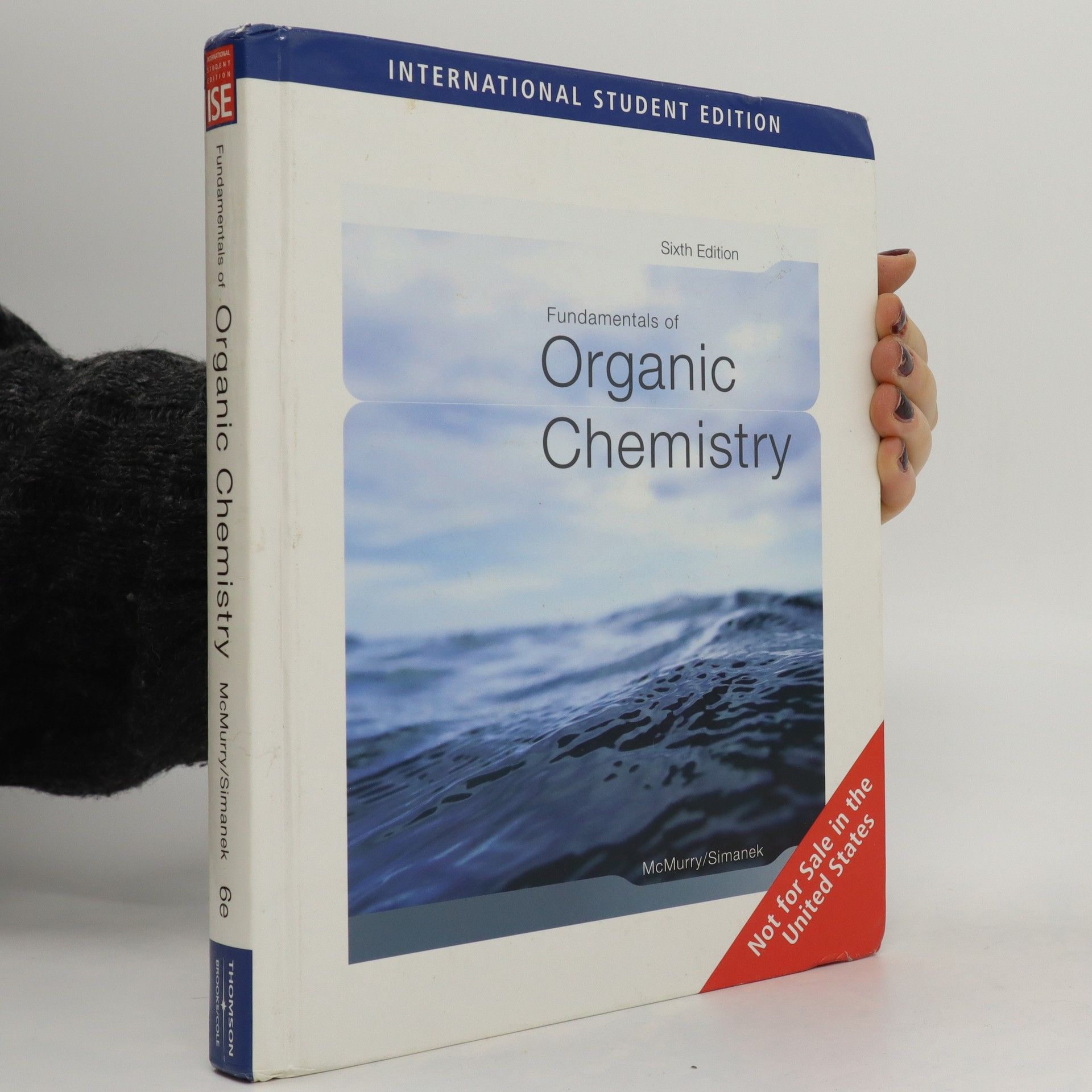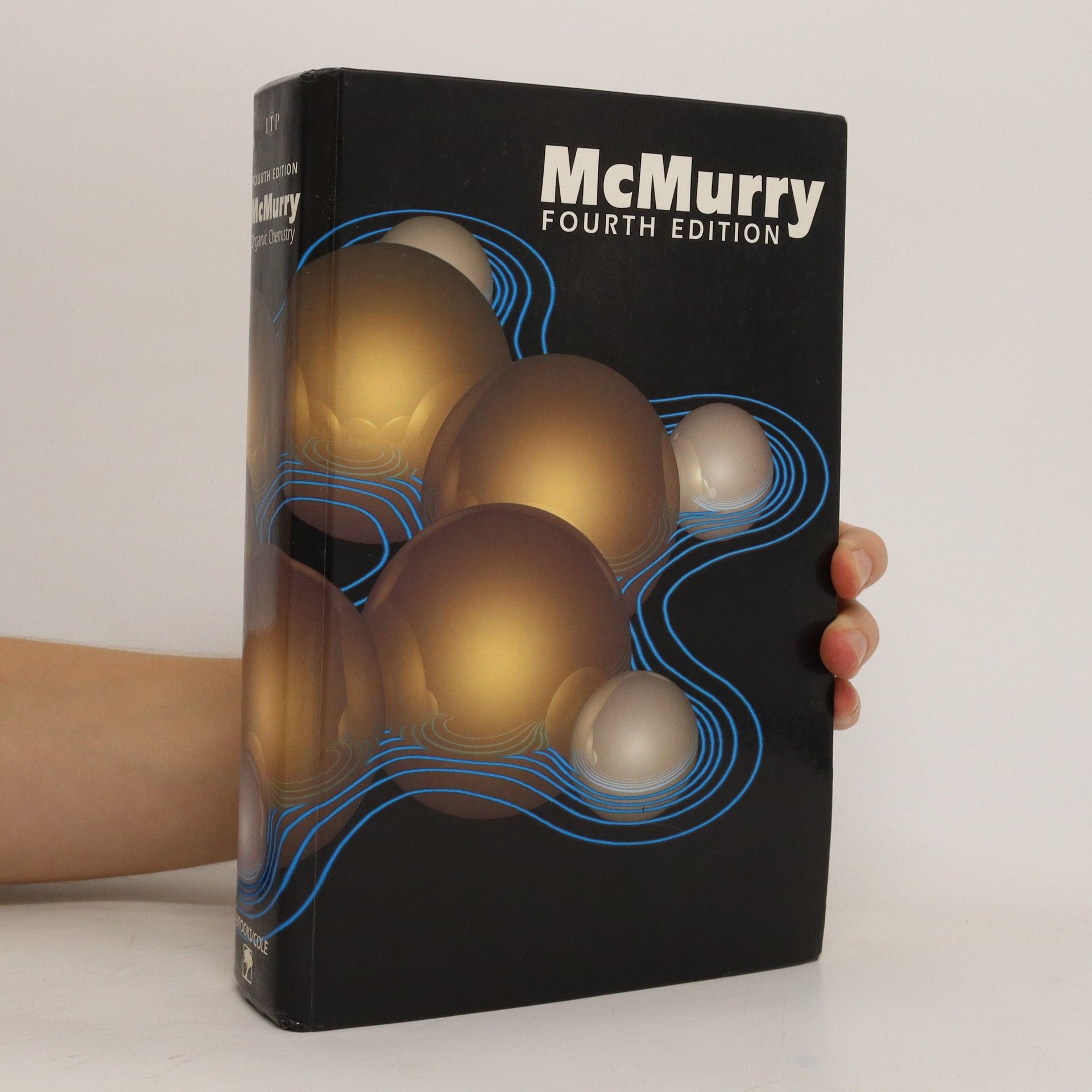Organic Chemistry
- 1243pages
- 44 heures de lecture







Master organic chemistry with the help of this proven best-seller! John McMurry's ORGANIC CHEMISTRY is consistently praised as the most clearly written book available for the course. In John McMurry's words: "I wrote this book because I love writing. I get great pleasure and satisfaction from taking a complicated subject, turning it around until I see it clearly from a new angle, and then explaining it in simple words." Through his lucid writing and ability to show the beauty and logic of organic chemistry, McMurry makes learning enjoyable. The highest compliment that can be given to a chemistry book applies to McMurry: It works!
The comprehensive guide enhances study effectiveness and exam performance through detailed answers and explanations for all exercises. Authored by Susan McMurry, it features updated content that aligns with the latest in-text and end-of-chapter exercises, making it an essential resource for students seeking to improve their understanding and skills.
Written for the short course–where content must be thorough, but to-the-point, FUNDAMENTALS OF ORGANIC CHEMISTRY, Sixth Edition, continues to provide an effective, clear, and readable introduction to the beauty and logic of organic chemistry. McMurry presents only those subjects needed for a brief course while maintaining the important pedagogical tools commonly found in larger books. With clear explanations, thought-provoking examples, and an innovative vertical format for explaining reaction mechanisms, FUNDAMENTALS takes a modern approach: primary organization is by functional group, beginning with the simple (alkanes) and progressing to the more complex. Within the primary organization, there is also an emphasis on explaining the fundamental mechanistic similarities of reactions. Through this approach, memorization is minimized and understanding is maximized.The sixth edition brings in new content that applies organic chemistry to students, for example all of the chapter openers have been changed and incorporate a model and photograph of an application of organic chemistry such as Taxol from the pacific yew tree. The book introduces a running application in the Interlude boxes and in the problems relating agricultural chemicals intended to unify the subject further for students. All of the problems have been reorganized by topic to make easier to assign and review. New problem categories have been added. The new problem categories are "In the Field with Agrochemicals" and "In the Medicine Cabinet" to reinforce the focus on applications.
Targeted at advanced undergraduates and graduate students, this textbook delves into the chemical reactions in living organisms, emphasizing substrate reactivity patterns and organic mechanisms. Readers are expected to have a foundational knowledge of organic chemistry. The second edition features updated mechanisms and includes hundreds of references to recent literature for those seeking deeper insights into the subject. The focus on enzyme roles is balanced with a detailed exploration of individual reaction processes.
The Study Guide/Solutions Manual provides comprehensive answers to all problems in the accompanying text, serving as an essential resource for students. It focuses on enhancing problem-solving strategies specifically tailored for organic chemistry, making it a valuable aid for mastering the subject.
Focused on the intersection of organic chemistry and biology, this edition enhances foundational concepts with biological examples and additional topics. It incorporates user feedback to improve content, featuring new problems, illustrations, and essays. The integration of Organic OWL, an online learning system, supports both teaching and learning by providing tutorials, simulations, and customizable assessments, making it a valuable resource for students and educators alike.
This comprehensive introduction to organic chemistry emphasizes real-life applications, making the subject relatable and engaging. Each chapter features a vibrant full-color art program that aids in visualizing chemical processes and reactions. Additionally, it offers effective learning tools designed to help students study, master essential concepts, and prepare for exams, ensuring a successful understanding of organic chemistry.
John McMurry's best-selling text presents organic chemistry in a new edition that is up-to-date, beautifully written, visually striking, and pedagogically sound. Described by many of its users as ''an eminently teachable text'' McMurry sets the standard in the field. The writing style has received almost universal acclaim from its users. McMurry introduces new concepts only as needed and immediately illustrates them with concrete examples. And wherever possible, he ties material together with brief reviews, overviews, and reaction summaries. The result is a text that helps students mentally organize the material; a text that helps them understand concepts (not just memorize facts); and a text that helps them make sense of the voluminous amount of material they encounter in the study of organic chemistry...McMurry uses a simple but important polar reaction--the addition of HBr to an alkene--as the lead-off reaction to illustrate the general principles of organic reactions. Users of former editions found this an excellent choice because of its relative simplicity (no prior knowledge of chirality or kinetics is required), and its importance as a polar reaction on a common functional group that offers students the key to understanding hundreds of thousands of ionic reactions. By selecting this particular model, McMurry is able to offer an unusually early presentation of organic reactions.
III część 5-tomowego znakomitego podręcznika akademickiego chemii organicznej, znanego i polecanego na polskich uczelniach! Książkę cechuje: przystępny, systematyczny wykład chemii organicznej; nowatorski sposób wyjaśniania mechanizmów reakcji; doskonały pod względem dydaktycznym i metodycznym układ materiału; świetne opracowanie graficzne; bogaty materiał ilustracyjny. Uaktualnione wydanie, będące tłumaczeniem najnowszego wydania oryginalnego, zawiera bogaty materiał rozszerzający i uzupełniający w postaci: · krótkich paragrafów wprowadzających do każdego rozdziału, z którego student dowie się, dlaczego materiał zawarty w rozdziale jest ważny; · ponad 1800 zadań zamieszczonych w tekście rozdziałów i na ich końcu, które umożliwiają studentom spojrzenie na chemię w trochę inny sposób – przez oglądanie cząsteczek, a nie tylko posługiwanie się wzorami strukturalnymi. Każdy Przykład zawiera Sposób rozwiązania i dokładne Rozwiązanie. Po nim przedstawione są zadania do samodzielnego rozwiązania przez studentów; · nowego działu Mechanizmy reakcji, który został dodany do zadań na końcu większości rozdziałów. Zostały w nim zebrane wszystkie zadania dotyczące mechanizmów; · nowego działu Doskonal swoje umiejętności analityczne i zdolność wnioskowania, który stanowią dwustronicowe opracowania tematów związanych z medycznymi, farmaceutycznymi i biologicznymi zastosowaniami chemii organicznej. Te opracowania umieszczone są w różnych miejscach podręcznika i obejmują materiał z poprzedzających rozdziałów. Uzupełnione są odpowiednimi pytaniami egzaminacyjnymi wielokrotnego wyboru, które są wzorowane na pytaniach egzaminu wstępnego, na przykład, przyszłych studentów medycyny. Nacisk położony jest wzmocnienie podstaw chemii organicznej przez ukazanie jej praktycznych zastosowań i przykładów z życia codziennego; · opracowania Coś ciekawego, które uzupełniają tekst i pokazują atrakcyjne zastosowania chemii; · nowych opracowań Skąd się biorą leki? i Mechanika molekularna; · podsumowań i haseł do zapamiętania będących pomocą w zapamiętaniu zasadniczych pojęć każdego rozdziału; · podsumowań reakcji na końcu rozdziałów, które są zestawieniem głównych reakcji omawianych w rozdziale. Wprowadzono również zupełnie nowy element: nawet podstawowe zagadnienia są dokumentowane przykładami zaczerpniętymi z biochemii, pokazującymi jak ogromnie ważnym narzędziem w poznawaniu procesów biologicznych jest zrozumienie podstawowych procesów i mechanizmów reakcji organicznych. Zawartość tomu 3 Rozdziały: · Benzen i aromatyczność · Chemia benzenu: aromatyczne substytucja elektrofilowa · Alkohole i fenole · Etery i epoksydy; tiole i sulfidy · Wstęp do chemii związków karbonylowych · Aldehydy i ketony: reakcje addycji nukleofilowej Coś ciekawego: · Aspiryna, niesteroidowe leki antyzapalnei inhibitory cyklooksygenazy · Chemia kombinatoryczna · Etanol – związek chemiczny, lekarstwo, trucizna · Żywice epoksydowe i środki klejące Synteza enancjoselektywna